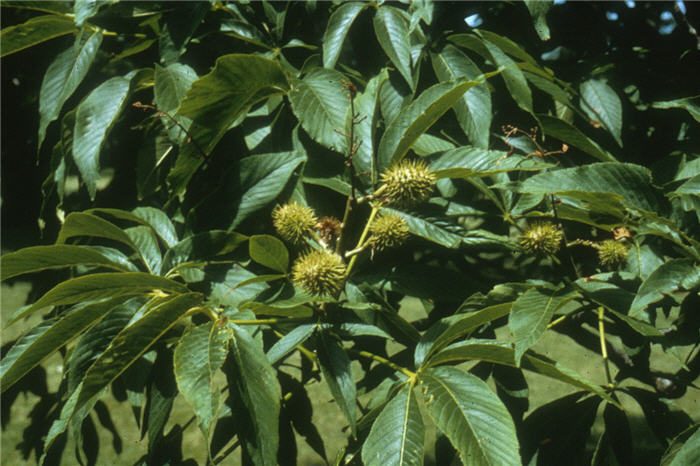| Botanical Name: Aesculus glabra | |
| Common Name: Ohio Buckeye |

-
Anatomy
-
Culture
-
Design
Plant Type
Tree
Height Range
25-40', 40-60'
Flower Color
Green, Yellow
Flower Season
Spring
Leaf Color
Green
Bark Color
Grey
Fruit Color
Brown
Fruit Season
Summer, Fall
Sun
Full
Water
High
Growth Rate
Moderate
Soil Type
Clay, Loam
Soil Condition
Average, Rich, Well-drained, Moist
Soil pH
Acid, Neutral
Adverse Factors
Messy
Design Styles
Woodland
Accenting Features
Showy Flowers
Seasonal Interest
Spring, Summer
Location Uses
Background, Lawn, Park
Special Uses
Shade Tree
Attracts Wildlife
Butterflies
Information by: Stephanie Duer
Photographer: Tony Bleach, Connon
Photographer: Tony Bleach, Connon
-
Description
-
Notes
Ohio Buckeye is a deciduous tree native to the southeastern and Central US. It usually grows about 30 feet tall and nearly as wide, though it can grow to 60 or 70 feet under ideal circumstances. It has a broad, rounded crown and very dense branching habit. Leaves are dark green, palmately-compounded, deeply ridged, and bright to dark green. Panicles of greenish-yellow flowers form mid-May, followed by light-brown prickly pods (seeds are poisonous). Bark is ashy grey.
Prefers deep, moist, well drained soil in full sun. This is a large, spreading tree and is best suited to large landscapes with expanses of groundcover or mulch. Leaves will scorch if inadequately watered. Not a low-water tree but may be suited to areas with a higher water table.